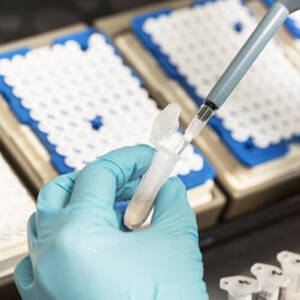-
 Encontrar enMiembros
Encontrar enMiembros Encontrar enVideos
Encontrar enVideos Encontrar enCanales
Encontrar enCanales
This website uses cookies to ensure you get the best experience on our website.
To learn more about our privacy policy haga clic aquíPreferencia de privacidad
-
- Última actualización 20 de octubre de 2024 0 comentarios, 119 vistas, 0 likes
- United States - Obtener las direcciones
More from Creative Peptides
More in Politics
Related Blogs
Archivo
Introduction to Peptide-Drug Conjugates and Their Targets
Cuerpo
Peptide Drug Conjugates (PDCs) represent a cutting-edge approach to targeted therapy. By coupling peptides with therapeutic agents, such as drugs, toxins, or imaging agents, PDCs can deliver these payloads specifically to diseased cells, minimizing off-target effects.
Design and Synthesis
Designing effective PDCs involves several key considerations:
Peptide Selection: Choosing peptides that can specifically target diseased cells, often based on their interaction with receptors or other biomarkers overexpressed in these cells.
Linker Chemistry: Employing linkers that can stably attach the therapeutic agent to the peptide while allowing for controlled release at the target site.
Payload Selection: Selecting a therapeutic agent that can effectively eliminate or visualize the diseased cells.
Applications
PDCs have shown promise in various fields, including:
Cancer Therapy: Targeting tumor cells while sparing healthy tissue, thus reducing side effects.
Antimicrobial Therapy: Enhancing the efficacy of antibiotics, especially against resistant strains, by directing them to the site of infection.
Diagnostics: Improving the sensitivity and specificity of imaging techniques for detecting diseases.
Challenges and Prospects
Despite their potential, several challenges need to be addressed for the broader application of AMPs and PDCs:
Stability: Enhancing the stability of peptides in biological environments to prevent degradation.
Selectivity: Improving the selectivity of peptides to avoid off-target effects.
Cost: Reducing the cost of peptide synthesis to make these therapies more accessible.
Through advances in peptide synthesis and innovative drug delivery strategies, these molecules could lead to the development of next-generation therapeutics, addressing some of the most pressing challenges in healthcare today.
Fotos
Mapa
-
Ubicaciones en MyWorldGo
Información sobre la ubicación
- Ubicación: United States - Obtener las direcciones
- Dirección formateada: United States
- País: United States










Comentarios